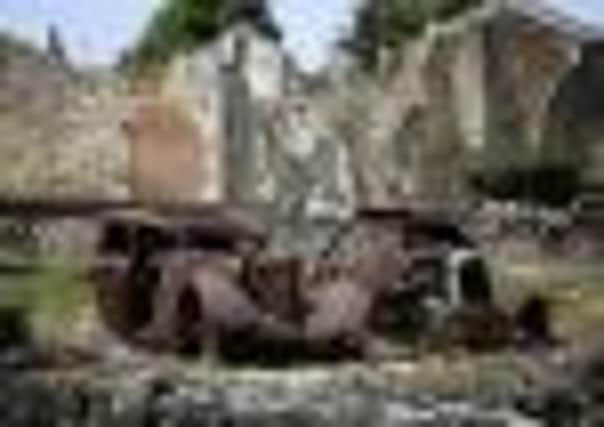Fresh inquiry into massacre by SS troops 67 years on


The investigation was triggered after information relating to the suspects was found in the yellowing files of the Stasi, the secret police of former Communist East Germany, which are now housed in a Berlin archive.
The homes of six men who served in SS Panzer division “Das Reich” were searched last week, authorities in Dortmund revealed yesterday. However, the prosecutor’s office said no new evidence was unearthed.
Advertisement
Hide AdAdvertisement
Hide AdThe massacre at Oradour, near Limoges, occurred on 10 June, 1944, as the Das Reich division was moving from its resting area in southern France to join the battle around the Normandy beachheads following D-Day four days earlier. By the time the SS moved out of Oradour, a community that had thrived for 1,000 years no longer existed.
Some 642 people were killed. The women and children were forced into the local church, which was set on fire with hand grenades. Men were shot in the fields and a barn; the mayor was dragged from his car in the main street and executed.
German prosecutors say that the six men, who have not been named, are aged 85 and 86. Two have denied being part of the massacre and four said for health reasons they were unable to give statements to prosecutors. Medical experts are examining them to determine if they are really incapable of understanding questions put to them.
It is unclear what information in the Stasi files prompted the fresh investigation.
The six suspects – who now live in the states of North Rhine-Westphalia, Lower Saxony, Hesse and Brandenburg – were members of the 3rd Company of the First Battalion of the Panzer-Grenadier-Regiment, to give the group its full title. Only 66 members survived the war.
A trial of some members of the company took place in Bordeaux in 1953. The court heard that Sturmbannfuehrer Adolf Diekmann, the SS officer who had led the massacre, was killed in Normandy, while Captain Otto Kahn, commanding officer of the 3rd Company, had allegedly escaped to Sweden.
A third of the soldiers in the regiment were born Frenchmen in Alsace, a province long disputed by Germany and France. About 100,000 Alsatians in total were conscripted to fight for the Third Reich when France fell to the Nazis in 1940.
The Bordeaux trial took place against a backdrop of shame and recriminations in a post-Second World War France struggling to come to terms with widespread collaboration with the enemy.
Advertisement
Hide AdAdvertisement
Hide AdOne of the most painful moments in the 1953 trial came when the fire-box of the village bakery, containing the remains of an eight-week-old baby stuffed into it by an SS man, was brought into court.
One German was acquitted, one sentenced to death and six others given long jail terms. One Alsatian was sentenced to death and 13 to prison terms with hard labour. But parliament passed a law stating that the Alsatians were forced into fighting for Hitler and they were released. Furthermore, the death sentences were commuted and the killers freed in 1958.
When the amnesty became known in the new town of Oradour-sur-Glane, the mayor, Monsieur Fougeras, returned the Légion d’Honneur the village had been awarded by the French government.
The old village of Oradour remains as it was on the day the Germans arrived. The car belonging to the mayor, Dr Jean Desourteaux, is still in the street; the church remains blackened from the fire; the bakery where the baby was burned alive still has its ovens in place. It is now a place of pilgrimage in France and the epic British Second World War documentary The World At War begins and ends with aerial shots of this haunting place.
One question remains about the massacre: Why? The accepted version of events after the war was that the SS wanted to make an example to their opponents, with the actual trigger being the kidnapping of a German soldier by the Resistance.
Dortmund prosecutor Andreas Brendel yesterday said: “We know that all the members of the 3rd Company were in Oradour. Naturally they had different functions – some of them secured the area, for example. Our problem at the moment is finding out how much they knew and what they might have done to facilitate the crime.”